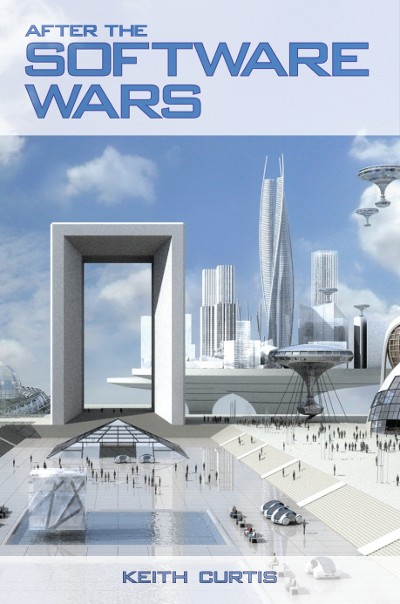No team won the two prizes for the tether and climber contests in NASA & Spaceward Foundation’s recent Space Elevator contest which is a shame because there have been a lot of news articles about it.
However, this contest seems designed by a marketing person to generate news articles, a grad student version of a soapbox derby, not to advance human understanding in any of the challenges in building a space elevator. For example, the current standard to beat in the tether contest is Spectra Fiber which is a polyethelene plastic; nanotechnology is nowhere to be found.
The Space Elevator guys hope for favorable comparisons to the X-Prize, though in fact the contests are very different. The X-Prize contest had winnings which were 100x greater, was a true contest with no timeline (this contest was announced in March) and completing the contest required man-years of work instead of just a few months by small teams. In short: if grad students in Canada can do well, then the problem is not hard enough. 🙂
In both cases, however, it isn’t clear that humanity has learned anything from the contests. Boeing isn’t going to have its top engineers rip SpaceShipOne apart like they would with a flying saucer or some other invention which was a true breakthrough; in fact SpaceShipOne is on its way to the National Air and Space Museum–to excite future generations if not be useful to this one. Perhaps the biggest thing learned from the X-Prize is that you only need an R&D budget of $26 million, not billions of dollars, to build a spaceship, but that is a testament to the sophistication of modern manufacturing techniques, not to the SpaceShipOne itself.
However, even if the X-Prize is mostly an engineering task, it was a significant one. The Space Elevator contest involves tackling only 2 small challenges and by having teams all working on the exact same small problem makes it the equivalent of research pork.
How about instead a contest where teams can attack any problem in building a space elevator and money would go to that which advanced our knowledge most? Different teams would focus on different problems: how lightning affects the tether, research into epoxies, the affects of radiation and high-speed objects, geographic research into the best places to anchor elevators, any aspect of space hotels or space tourism, work on adaptive optics, MPDs, robotics and software, etc., etc. The Space Elevator book is currently the best compedium of solutions to many of the challenges in building a space elevator, but the book exudes future challenges!
The current Space Elevator contest is a 20th-century contest for a 21st-century problem. It becomes harder to judge such a contest, but then lets just get smarter judges! More importantly, it becomes much more likely that people will solve real problems that mankind hasn’t solved before and therefore be worthy of the news it will generate. Unleash our ingenuity!




You’re probably need to be talking to an economic expert – you’ve got me. Sorry.
It’s clear – I think – that prizes have a long history and a clear benefit for all involved. I believe the first such in modern society was awarded by the British Crown for a means to determine latitude.
Granted this contest is limited – but it’s the first one in this series. Make the goals too hard to attain and no one will participate; space elevators are still ‘out there’. This contest attracted interest and set a base for future challenges.
I disagree that the current challenge is last centuries solution – the approach works. You don’t throw away a workable process simply because it’s old hat.
Prizes which advance public awareness are also very useful. I agree that NASA’s motivations may well be bureaucratic “me-too”-ism. However, one of the venture capital capitols of the world, Silicon Valley, got a fair amount of media coverage on this competition. I suspect that could create some dynamics outside NASA’s (and our) view.
MG
Keith, I disagree that the success and cost of SpaceShip One is only a “testament to the sophistication of modern manufacturing techniques.” The design is in many ways a significant departure from previous space vehicles, in terms of its passive systems for ensuring orientation on descent, its use of hybrid engines, etc. etc.
And while many people say that Elevator:2010 is only an educational gimmick, I agree with Brian that prizes are certainly a good way to go. The prize money for e2010 is small compared to the X-Prize, but the questions are in a sense much more removed from current expertise than rockets are. A bigger prize would draw more serious competitors, true. I think the size of the prize should increase each year, if they can get the money.
Although I disagree with how Elevator:2010 has structured its tether challenge, they do have the point that if it were actually won each year then we would have materials on the cusp of being usable for building the space elevator (i.e., each year the winner has to be more than 50% better than the previous year’s winner).
Finally, a largish engineering prize can’t be for a vague goal. Even if power beaming and ribbon material are only part of the space elevator question, it’s impractical to try and judge a competition when one entry is on lightning strikes and another is on ribbon strength. The prize needs to be awarded for an objective, well-defined goal.
“…if grad students in Canada can do well, then the problem is not hard enough.”
Dr. Edwards seems to have an opinion about technology development capability of Canadians. Simple folk, we are…